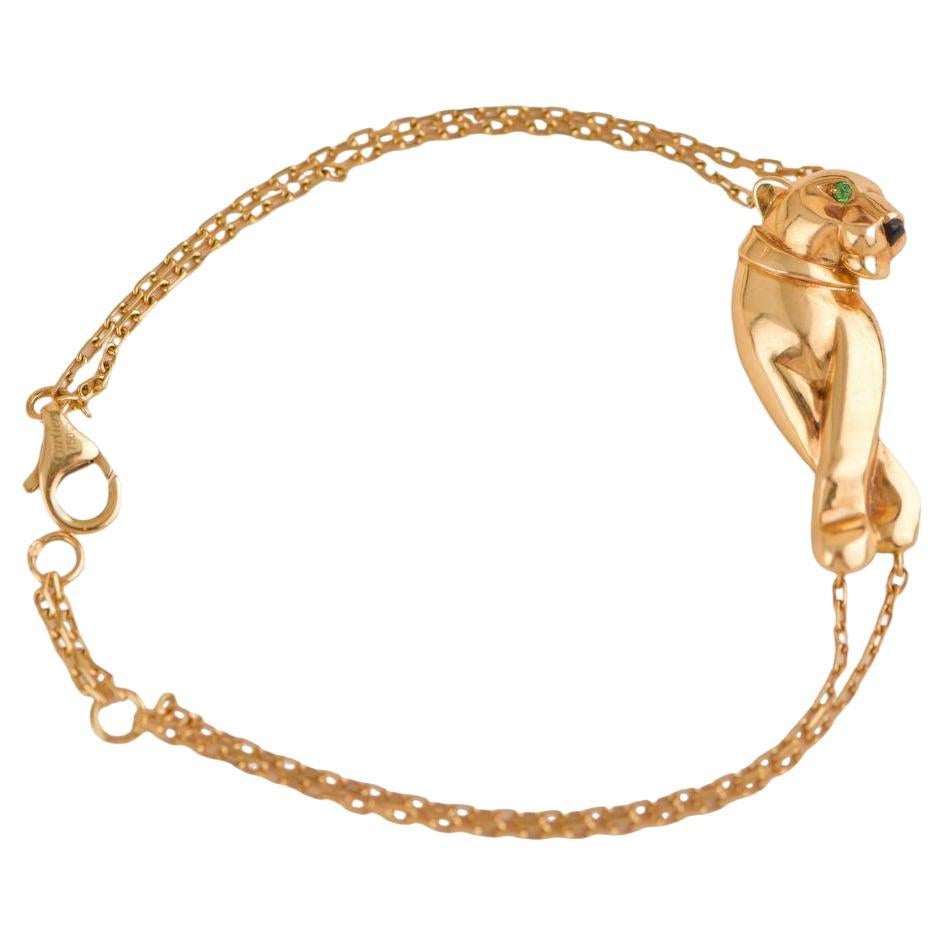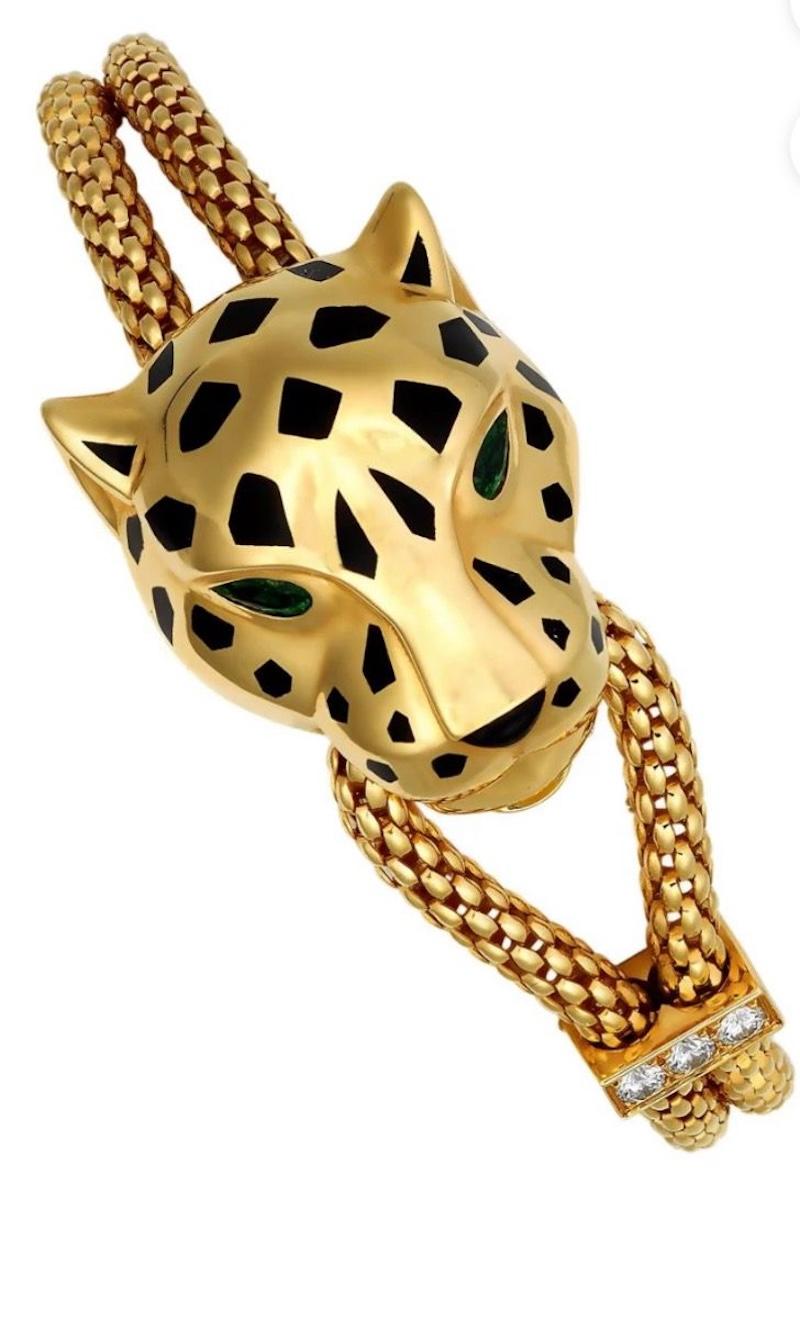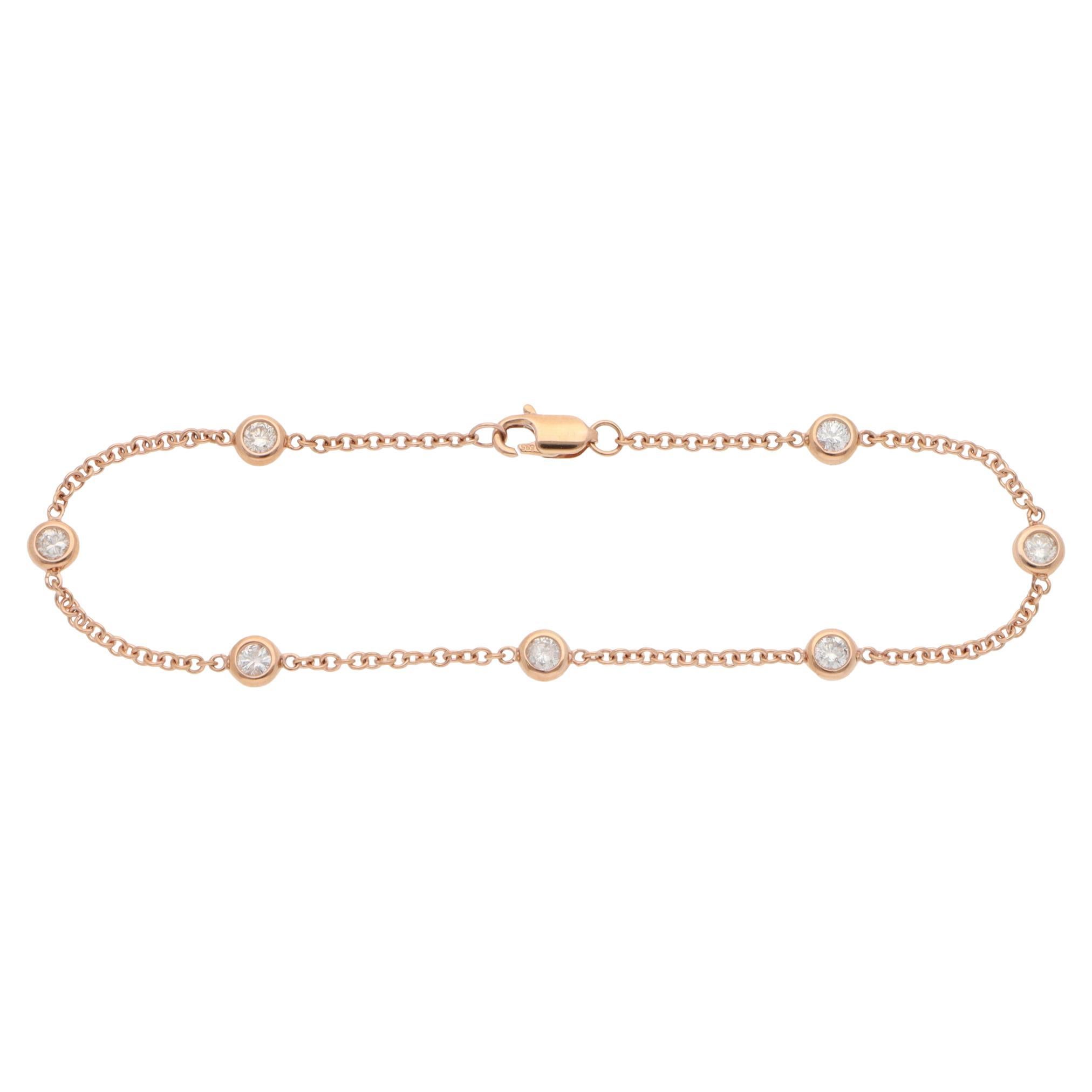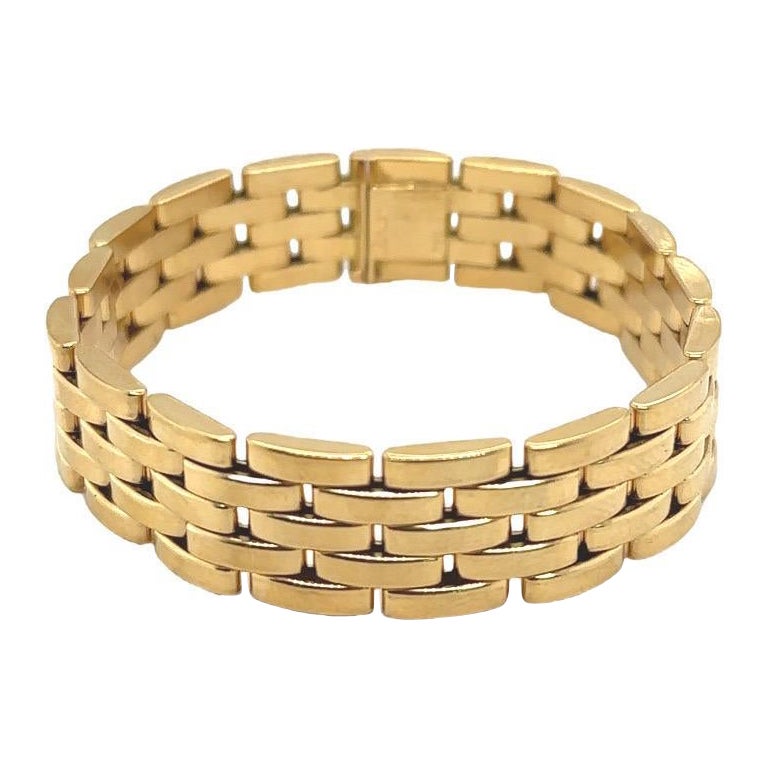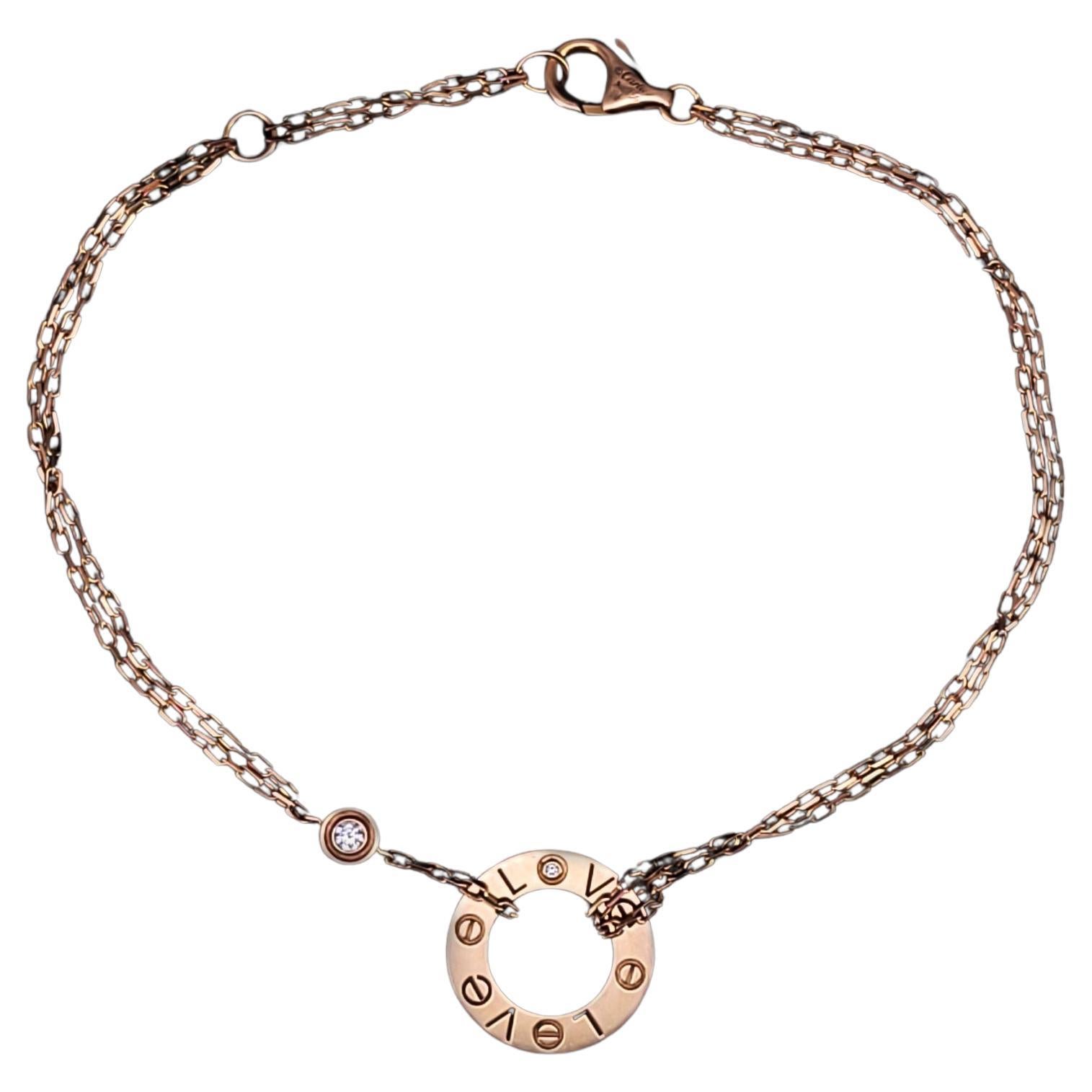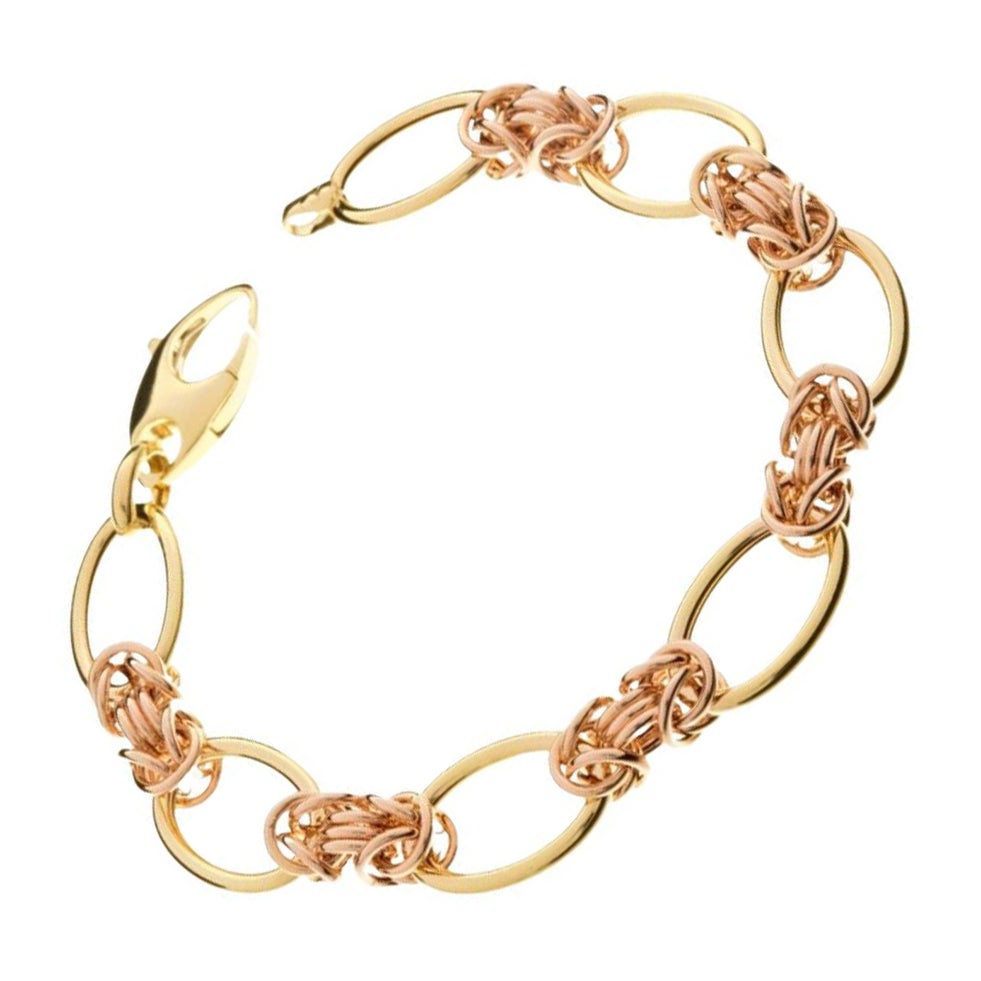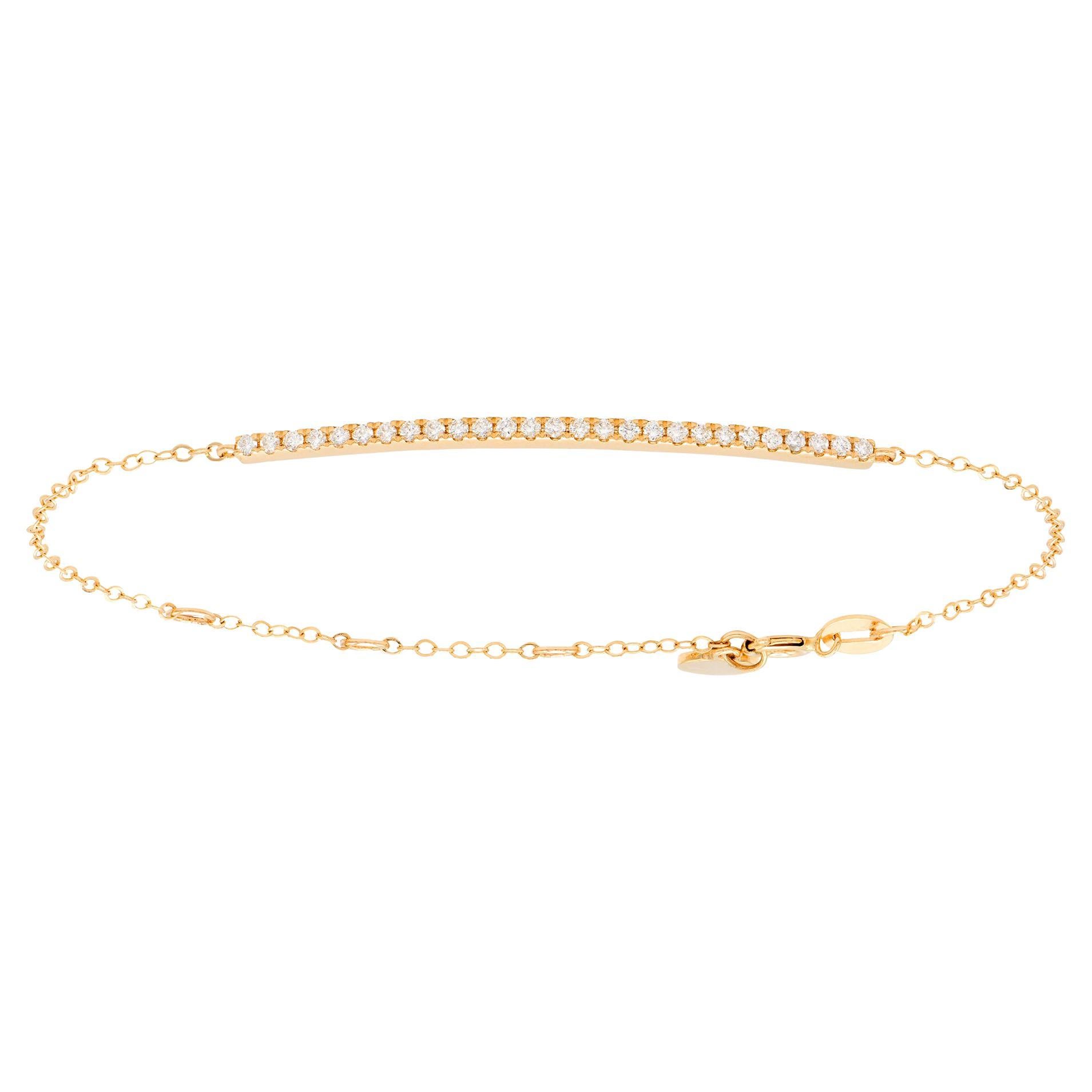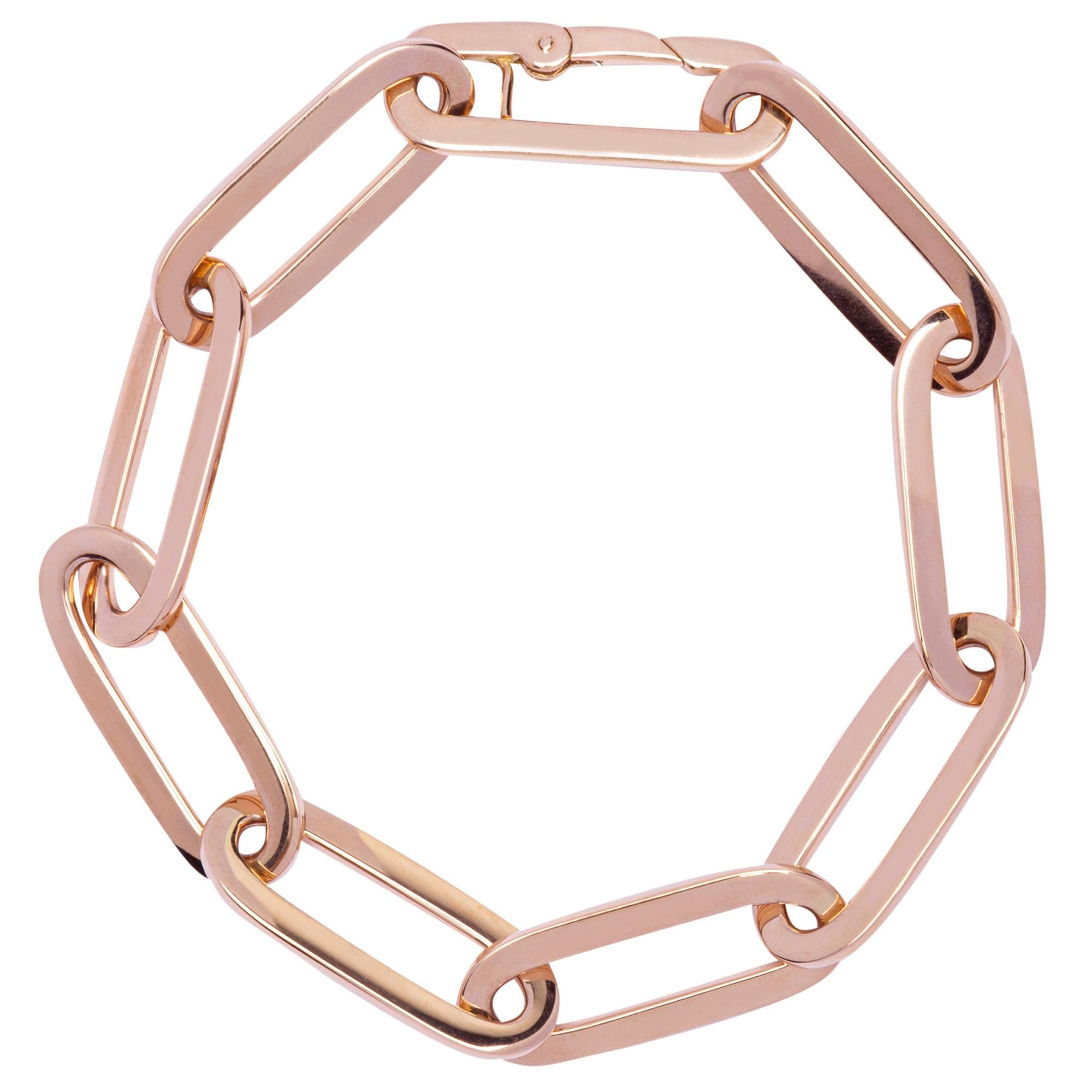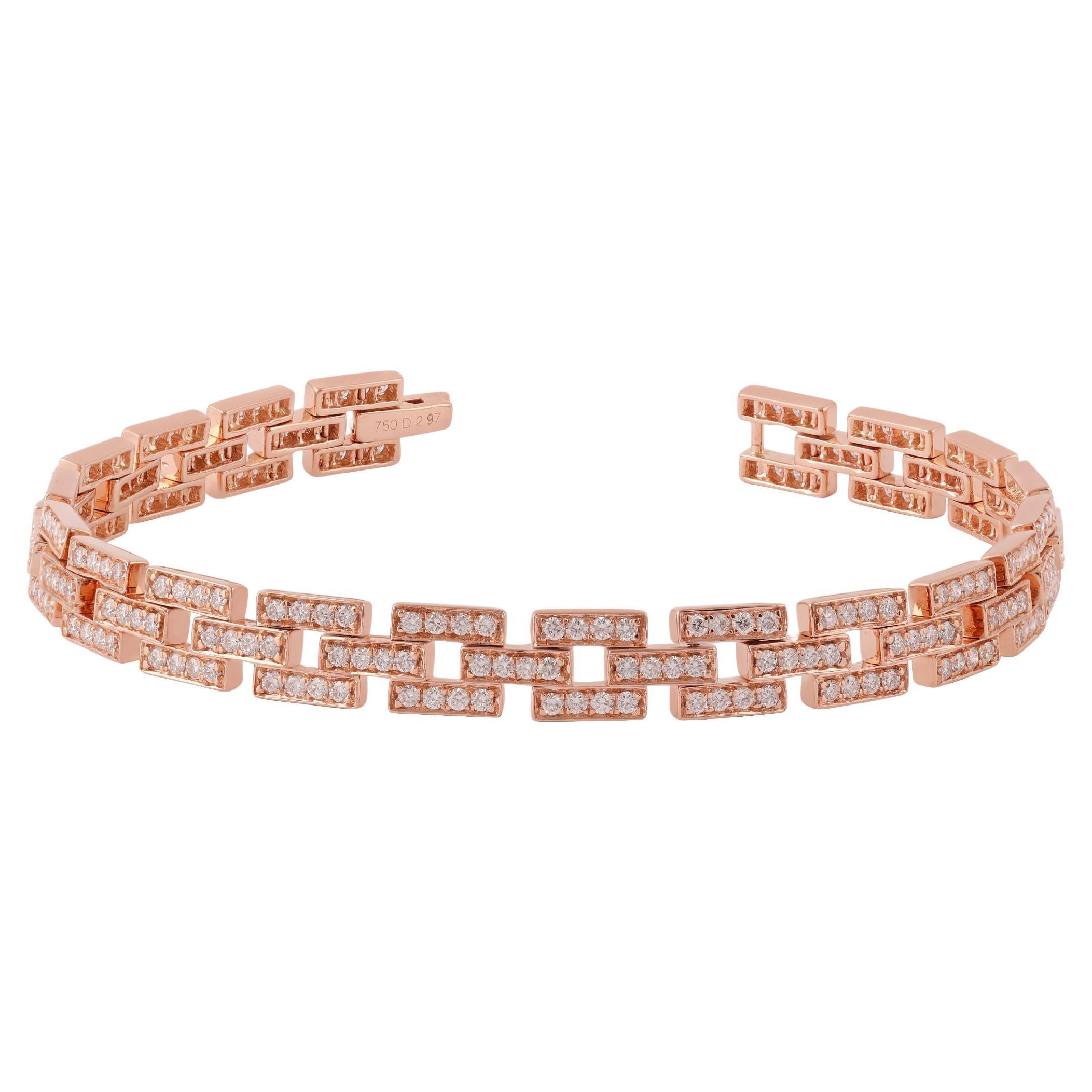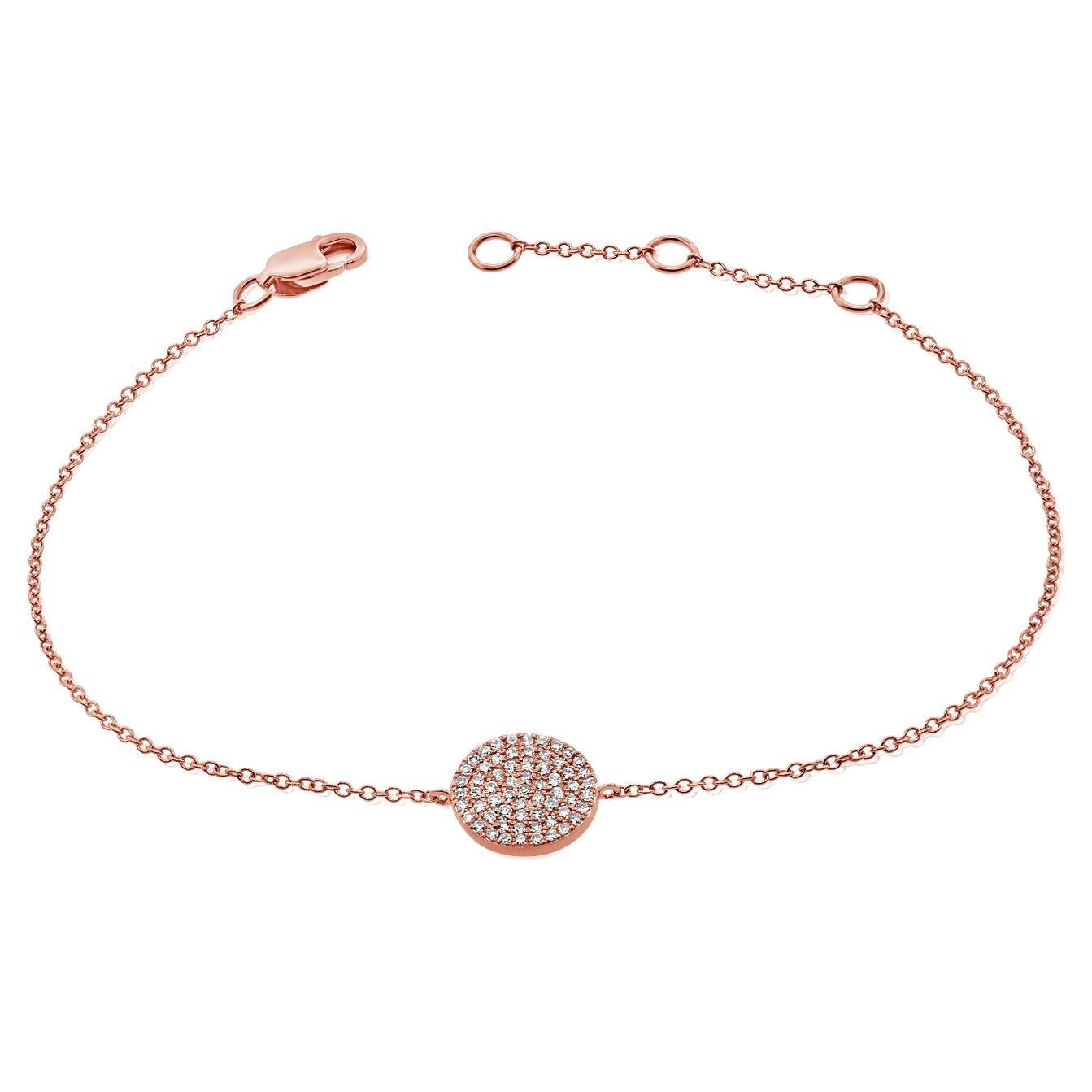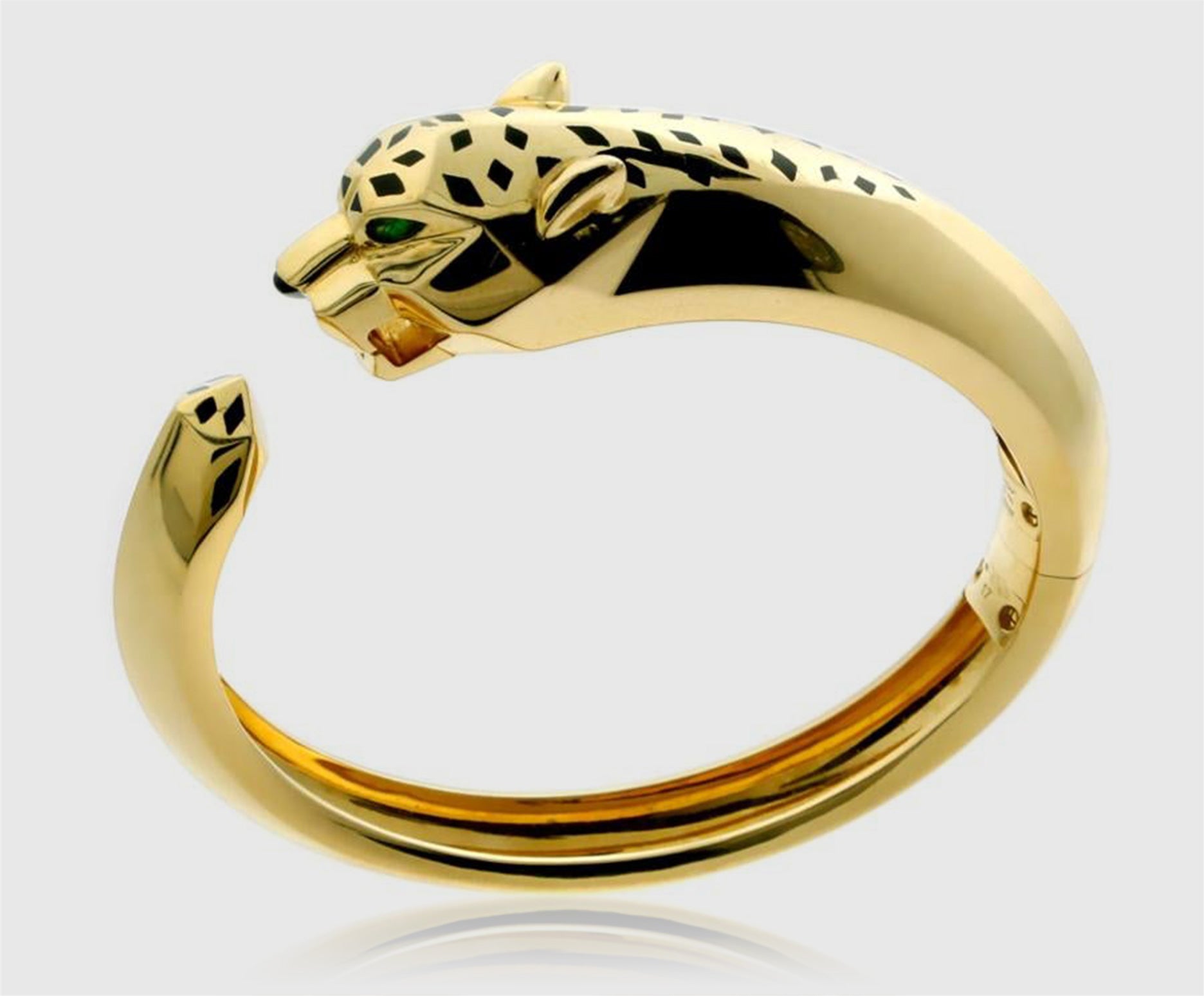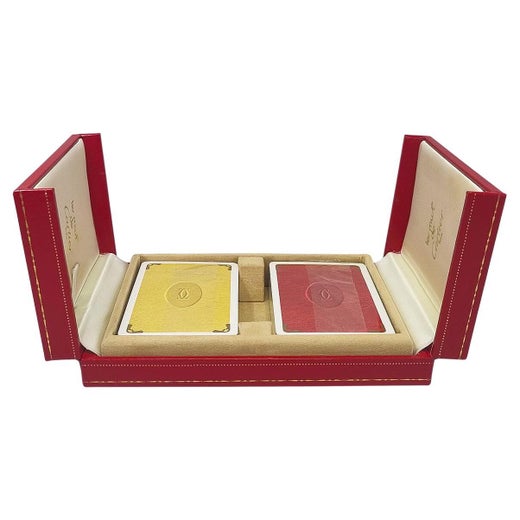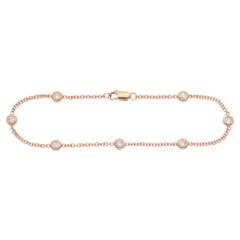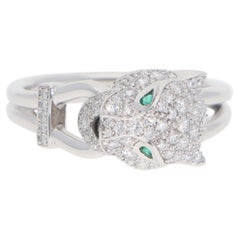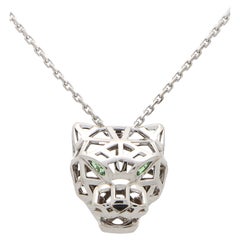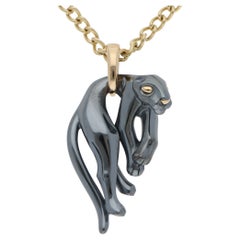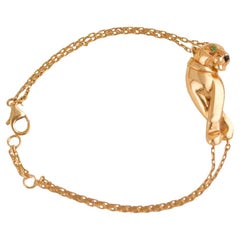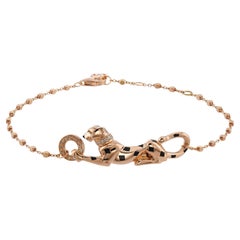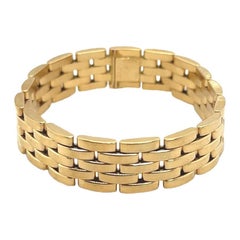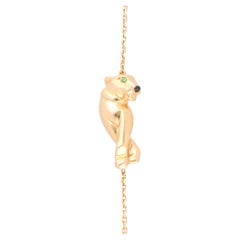
Vintage Cartier Panthère de Cartier Chain Bracelet in Rose Gold
View Similar Items
Vintage Cartier Panthère de Cartier Chain Bracelet in Rose Gold
About the Item
- Creator:
- Design:Panthère BraceletPanthère Collection
- Metal:
- Stone:
- Stone Cut:
- Weight:3 g
- Dimensions:Height: 0.56 in (14 mm)Width: 0.24 in (6 mm)Length: 6.3 in (160 mm)
- Style:
- Period:
- Date of Manufacture:Unknown
- Condition:Wear consistent with age and use.
- Seller Location:London, GB
- Reference Number:Seller: 25-03-1531stDibs: LU639324153782
Panthère de Cartier Bracelet
Purchased by the Duke of Windsor for his wife, the Duchess of Windsor — otherwise known as Wallis Simpson — in 1952, the original Panthère de Cartier bracelet is more like a sculpture for the wrist than a piece of jewelry. It features a diamond-and-onyx-encrusted panther with marquise-cut emerald eyes positioned as if they were fixated on prey. Craftsmen at the internationally acclaimed French jewelry house Cartier had already introduced similarly themed pieces, and the Duchess was by then an ardent admirer of the motif.
The panther motif was not a novel concept created specifically for the bracelet. It was instead a long-established icon for Cartier. While the brand was launched in 1847 by Louis-François Cartier, it was his grandson Louis Cartier who incorporated the feline figure into its design lexicon. In 1914, Cartier hired illustrator George Barbier to design advertisements for the jewelry house. Barbier drafted a drawing that featured a glamorous woman with an elegant panther at her feet and Cartier loved it. He had an additional connection to the panther in the form of his alleged romantic interest, fellow Cartier designer Jeanne Toussaint, who adored the animal so much that she decorated her apartment with furs and donned a coat of panther fur. Cartier gave her the long-lasting nickname Panthère.
While panthers appeared on Cartier vanity cases and more in as early as 1917, the icon didn’t take on its best-known three-dimensional form until the late 1940s, when the Duke of Windsor purchased a brooch from the house for his wife. This piece, designed by Toussaint — the first of at least two brooches bought by the Duke in this era — featured a gold panther lying atop a cabochon emerald. The couple ordered a panther clip in 1949 — this one accompanied by a 152.35-carat Kashmir cabochon sapphire — followed by the bracelet three years later. While the bracelet is not accompanied by a large gem, it stands out from its predecessors in that its form is articulated so that its linked pieces can move along the wrist rather than remain fixed in place.
The Windsors were not the only customers enamored of Cartier’s panther. Socialites and royalty purchased their own cat jewels from Cartier over the years. Since then, the brand has released numerous Panthère pieces, from the 1983 Panthère de Cartier watch to the 1987 Panthère de Cartier perfume. A special collection of panther-adorned jewelry debuted in 2014 to celebrate the centennial of the icon, although none can quite compare to the Duchess’s original bracelet — it fetched $7 million at auction in 2010.
Cartier
For its extraordinary range of bracelets, watches, rings and other adornments, French luxury house Cartier is undeniably one of the most well known and internationally revered jewelers in the world among clients both existing and aspirational.
Perhaps 1847 was not the ideal time to open a new watchmaking and jewelry business, as the French Revolution was not kind to the aristocracy who could afford such luxuries. Nevertheless, it was the year Louis-François Cartier (1819–1904) — who was born into poverty — founded his eponymous empire, assuming control of the workshop of watchmaker Adolphe Picard, under whom he had previously been employed as an assistant. Of course, in the beginning, it was a relatively modest affair, but by the late 1850s, Cartier had its first royal client, Princess Mathilde Bonaparte, niece of Napoleon Bonaparte, who commissioned the jeweler to design brooches, earrings and other accessories.
Under the leadership of Louis-François’s son, Alfred, who took over in 1874, business boomed. Royalty around the world wore Cartier pieces, including Tsar Nicholas II of Russia, the Maharaja of Patiala and King Edward VII, who had 27 tiaras made by the jewelry house for his coronation in 1902 and issued Cartier a royal warrant in 1904. (Today, the British royal family still dons Cartier pieces; Kate Middleton, Duchess of Cambridge, regularly sports a Ballon Bleu de Cartier watch.)
Cartier’s golden years, however, began when Alfred introduced his three sons, Louis, Pierre and Jacques, to the business. The brothers expanded Cartier globally: Louis reigned in Paris, Pierre in New York and Jacques in London, ensuring their brand’s consistency at their branches across the world. The trio also brought in such talents as Charles Jacqueau and Jeanne Toussaint.
One of Cartier’s earliest major successes was the Santos de Cartier watch — one of the world's first modern wristwatches for men. (Previously, a large number of people were using only pocket watches.) Louis designed the timepiece in 1904 for his friend, popular Brazilian aviator Alberto Santos-Dumont, who wanted to be able to check the time more easily while flying.
Cartier’s other famous timepieces include the Tank watch, which was inspired by the linear form of military tanks during World War I, and the so-called mystery clocks. Invented by watchmaker and magician Jean-Eugène Robert-Houdin and later crafted exclusively for Cartier in the house’s workshop by watchmaker Maurice Couët, the mystery clocks were so named because the integration of glass dials on which the clocks’ hands would seemingly float as well as structures that are hidden away within the base give the illusion that they operate without machinery.
On the jewelry side of the business, Cartier’s internationally renowned offerings include the Tutti Frutti collection, which featured colorful carved gemstones inspired by Jacques’s trip to India and grew in popularity during the Art Deco years; the panthère motif, which has been incorporated into everything from brooches to rings; and the Love bracelet, a minimal, modernist locking bangle inspired by medieval chastity belts that transformed fine jewelry.
While the Cartier family sold the business following the death of Pierre in 1964, the brand continues to innovate today, renewing old hits and creating new masterpieces.
Find contemporary and vintage Cartier watches, engagement rings, necklaces and other accessories on 1stDibs.
More From This Seller
View All2010s Modern Chain Bracelets
Diamond, Gold, 14k Gold, Rose Gold
2010s European Modern Cocktail Rings
Diamond, Emerald, Onyx, Gold, 18k Gold, White Gold
2010s Unknown Modern Pendant Necklaces
Gold, 18k Gold, White Gold
Late 20th Century European Pendant Necklaces
Hematite, Gold, 18k Gold, Yellow Gold
21st Century and Contemporary Cocktail Rings
Emerald, Onyx, Gold, 18k Gold, Yellow Gold
Late 20th Century European Cufflinks
Diamond, Gold, 18k Gold, Rose Gold, White Gold, Yellow Gold
You May Also Like
2010s French Modern Bracelets
18k Gold, Yellow Gold
1990s Modern Bracelets
Yellow Gold
2010s Link Bracelets
Diamond, Tsavorite, Rose Gold
Early 2000s French Chain Bracelets
18k Gold, Yellow Gold
21st Century and Contemporary Chain Bracelets
Diamond, 18k Gold, Rose Gold
21st Century and Contemporary Brazilian Byzantine Chain Bracelets
Gold, 18k Gold, Rose Gold, Yellow Gold
Recently Viewed
View AllRead More
This Cartier Panthère Watch Is as Effortlessly Elegant as It Is Wearable
Cartier understands the value of preserving the signature codes of great design, and how to tweak it for modern aficionados.
These White Lotus Guests Have the Most Compelling Watches
Throughout the season, timepieces are clues to the characters' character.
